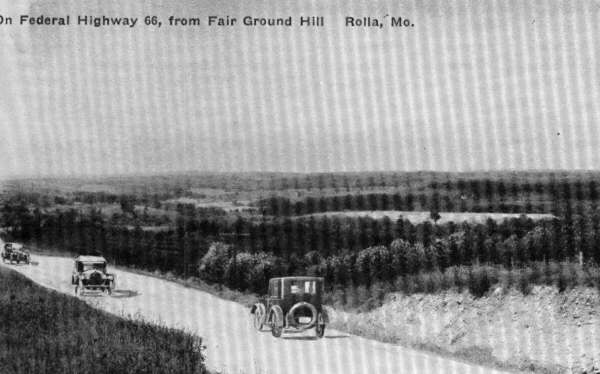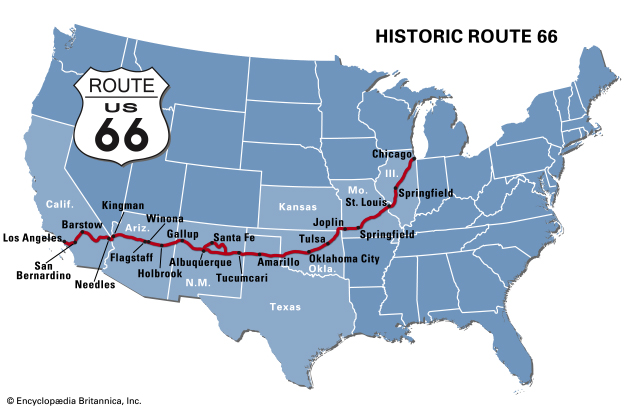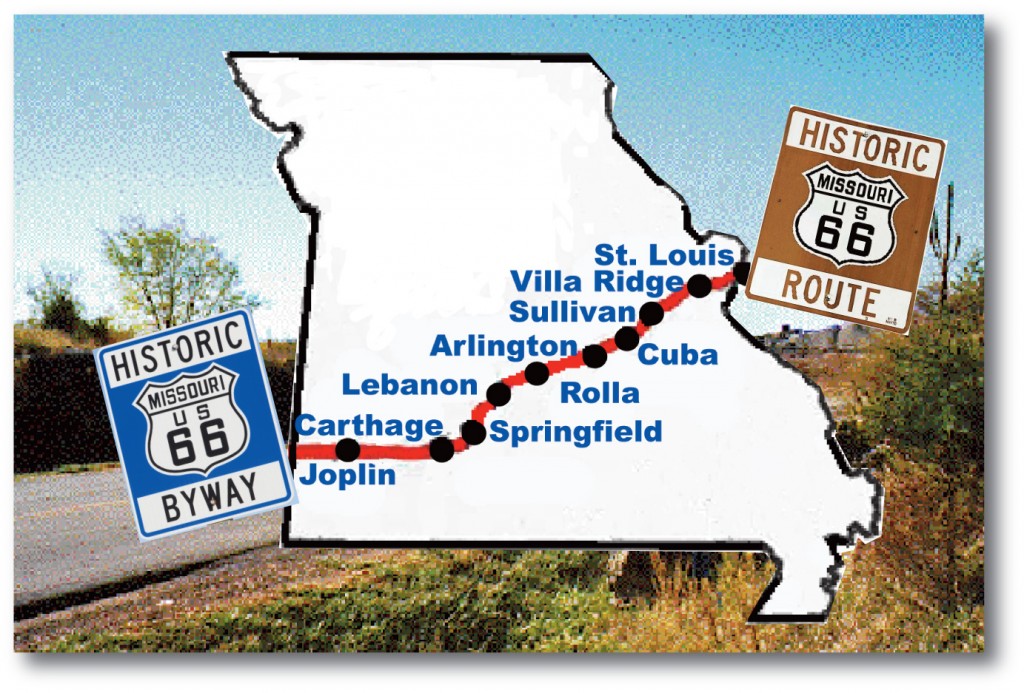The American highway system and the subsequent rise of tourism in the United States have their roots at the beginning of the twentieth century. The need of a better connected nation became apparent after the turn of the century, leading the United States government to pass the Federal Highway Act of 1921, which required the construction of a “system of interconnected interstate highways.”¹ This, in connection with the increasing availability of automobiles, saw an increase in the mobility of the average American and an interest in exploring the country. This began to make “out-of-the-way-places” and historic locations accessible, which allowed for the “growth of a viable industry for local and state economies” based on the increasing flow of tourism.²

Route 66 near Rolla, Missouri during the late 1920s. Courtesy of OzarksWatch.
One of the oldest and most famous of these roads was Route 66, which had its routes in Springfield, Missouri in 1926. Spanning the nation from Chicago to Los Angeles, Route 66 acted as a major migration route during the Great Depression and later as a major trucking route during World War II.3 These decades established the highway as a major economic corridor that linked the nation and established prosperous cities and towns along its path.

Courtesy of Encyclopaedia Britannica.
As the travel along Route 66 steadily increased throughout the first half of the twentieth century, local economies came to realize the importance of drawing in travelers. In Missouri, some of the communities voicing this realization established the Ozark Trails Association to promote the rise of a tourist economy within the “Ozark Playgrounds.” The association was granted a charter by the state of Missouri in 1927, which stated:
“The association is formed to promote the early completion and secure permanent maintenance of U.S. Highway No. 66 between Chicago and Los Angeles, commonly called ‘The Main Street of America,’ and to encourage the people at large to use the same…”4
The work of the Ozarks Trail Association brought a lot of interest into both the “scenic beauties of the Missouri Ozarks region” and into Route 66 itself and made the reliance on a tourist-based economy a viable option for Ozark communities on the fringe of the Mother Road.5

Courtesy of The Route 66 Association of Missouri.
Cities along Route 66 were able to capitalize on the rising national interest in the Ozark Playgrounds as well. Springfield, Missouri, with its close proximity to the waterways and hills of the Ozarks, its status as the “Queen City” of the Ozarks, and its designation as the birthplace of Route 66, quickly became the “favorite jumping-off point to the Ozark playgrounds.”6 Joplin, the last major town on Route 66 in Missouri as you drive west, designated itself the “Gateway to the Ozarks.”7 As evidenced from these titles, many Missouri communities, both on those on Route 66 and those near it, benefited from the increase of traffic across the state and the opportunities for business that this brought. And although Springfield and Joplin became major traffic hubs and profited from the rising popularity of the Ozarks as a tourist destination, they were not at the center of the this business. The Ozarks Playground had been developing on its own just south of these two cities for decades and only needed the jolt of activity spurred by the federal highway system to emerge as a national interest.
Next: The Ozark Playgrounds
1. Michael Wallis, Route 66: The Mother Road (New York: St. Martin’s Press, 1990), 5.
2. Karen L. Cox, Destination Dixie: Tourism & Southern History, (Gainesville: University Press of Florida, 2012), 4.
3. Wallis, Route 66, 19-21.
4. Ibid., 10-11
5. Ibid.
6. Ibid., 73.
7. Ibid., 76-77.